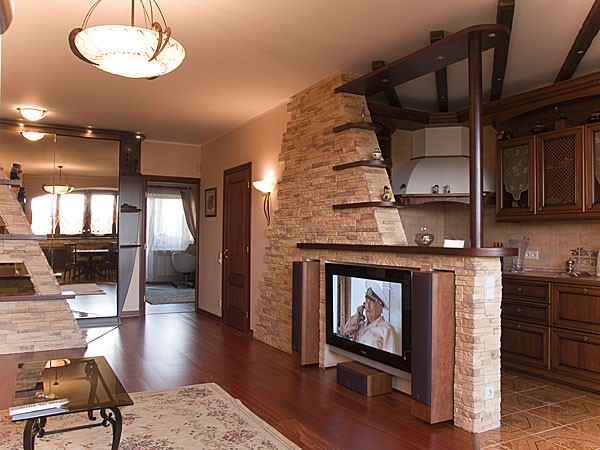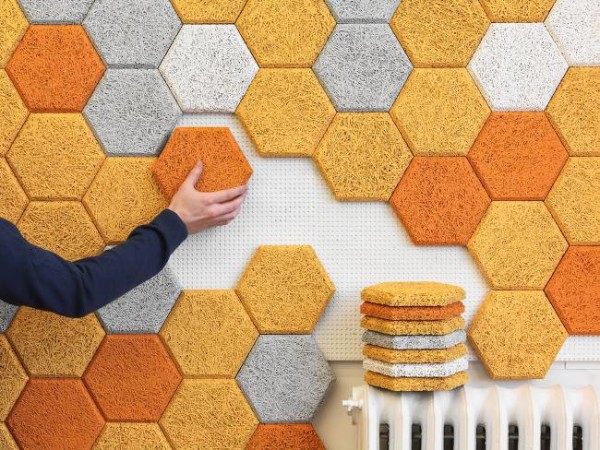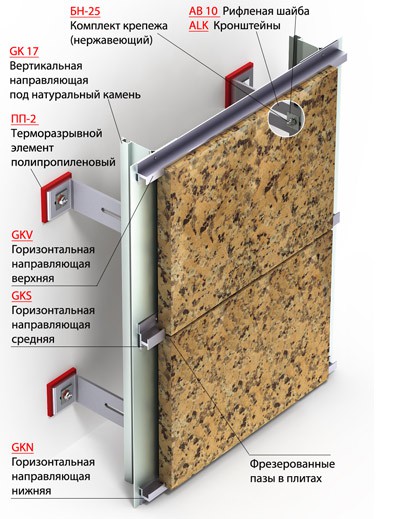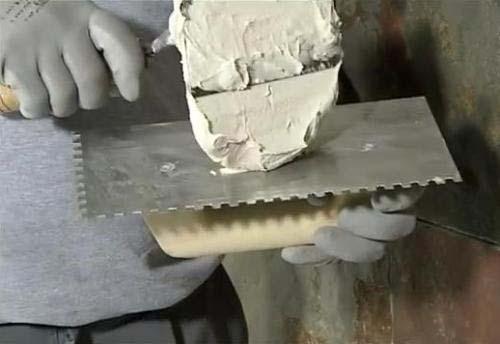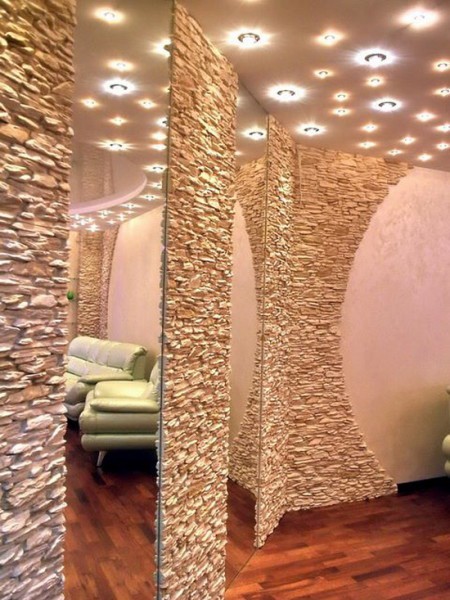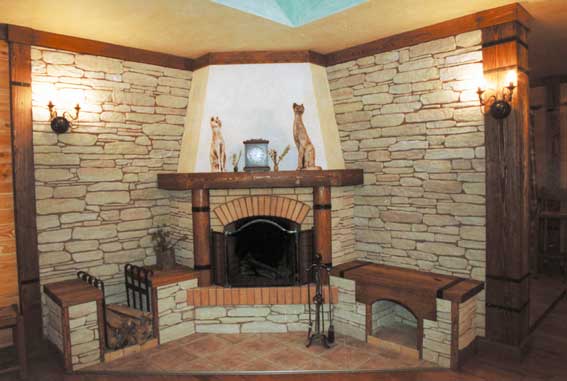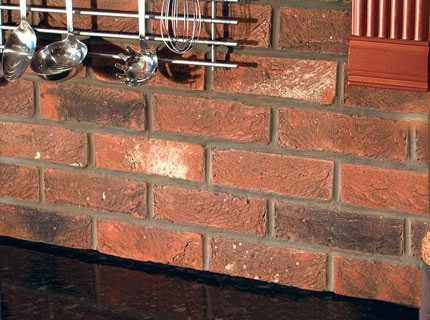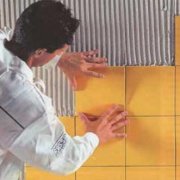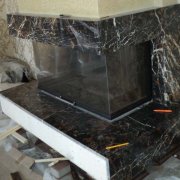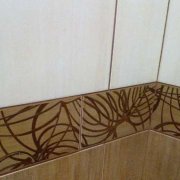Stone Tile: Features and Applications
Finishing work inside helps to create an atmosphere of coziness and comfort in the room. Along with a large number of materials, stone tiles for interior decoration are very popular.
There are a variety of photos with a stone finish; for this, tiles from:
- Natural stone.
- Decorative stone.
- Ceramic tiles.
Note. According to their technical properties and characteristics, in some indicators, materials of these types have similarities, and, in some places, distinctive features.
The content of the article
Natural stone tiles
Stone tiles for interior decoration made of natural agglomerate are distinguished by their original design.
It:
- Very durable.
- Practical.
- Reliable.
- Durable
- The surface of this material cannot absorb various contaminants and moisture.
- It is fairly well cleaned with a damp cloth.
The surface of the tile may be:
- Glossy.
- Matt
- Embossed.
- Convex.
- Porous.
- Glazed and so on.
Note. This indicator depends on the type of tile made of natural stone.
Currently used as a tiled finishing material:
- Marble.
- Sandstone.
- Granite.
- Onyx.
- Basalt.
Features and specifications:
- Any of these materials has its own dimensions and thickness. As a rule, the thickness can be at least 5 mm.
These natural agglomerate tiles are used on wall surfaces and you need to work with them extremely carefully, since the material is quite fragile. - Price of tiles from natural stone very high, since natural agglomerate is an environmentally friendly material. It is extracted from rocks.
After that, he goes through a very long process of processing and research on radioactive radiation. - Natural stone tiles have a lot of weight. If it will be of considerable mass and large size, then before installing such a material it is worth strengthening the surface.
For this, a reinforcing wire mesh is used. It is mounted using a layer of plaster on the surface.
Tip. Such actions should be performed if the tile is mounted on the wall. For the use of natural tiles on the floor surface, reinforcement is not required, since the material will be in a horizontal position under its own weight.
Installation of natural stone tiles
In order to qualitatively carry out installation of such finishing material it is necessary to perform surface preparation thoroughly for such work. Complete the whole process is not difficult, and you can do it yourself.
Preparatory work - surface leveling:
- Since the surface of the tile on the back is very flat, the surface on which it will be mounted will also have to be aligned. For this, plaster or drywall is used.
Tip. Drywall is used to level the surface in the event that the weight of the material is not too large.
- In most cases, plaster is used to level the surface. It is of two types: start and finish.
- The names of the plaster speak for themselves. First, starting plaster is applied to the surface.
Its first layer is applied and a reinforcing mesh is fixed on it to strengthen the surface. The number of layers of starting plaster depends on surface defects.
After complete drying, each layer is treated with sandpaper. - The use of finishing plaster is the final stage of leveling work. Its layers should be thin, since the main task of the finish layer is to hide the defects of the first starting layers.
It should also be treated with sandpaper after drying. The video shows the process of using plaster on the surface.
To apply the plaster you will need:
- Container for mixing plaster mortar.
- Construction mixer to give the solution a homogeneous mass.
- Level.
- Spatula (large and smaller).
- Sandpaper (with large and small cells).
Plaster leveling is fairly straightforward.
The process of installing natural stone tiles
All works are very light, they are produced without specialized assistance, just watch the video.
For them you will need:
- Cement mortar.
- Level.
- Tile cutter.
- Spatula.
Stages:
- Cement mortar is made independently from water, sand and cement.
Tip. In cement mortar, cement (400) should be used, which has excellent strength after solidification.
- Instead of cement mortar, special glue is also used. But its use is possible only if both the weight and size of the natural stone tiles are not too large.
- The solution is applied to the surface and to the inside of the natural agglomerate tile. After this, the material is fixed to the surface.
Tip. The laying of such tiles must be carried out in stages, so that each element provides sufficient strength.
- To install the tile you need to start from the bottom of the surface and gradually rising up. The same distance between the trim elements is achieved by using cross-shaped or rubberized beacons that are inserted between each trim element.
You can not use them, but carry out the laying of natural stone tiles closely.
To mask the seams, it is worth using decorative putties. And it is best to add coloring pigments of the desired shade to the cement mortar.
Decorative stone trim tile
Natural stone tiles for interior decoration can be made of artificial conglomerate. It looks similar to natural stone tiles and has almost the same properties and characteristics.
Decorative stone tiles:
- It has a large selection of design and shades.
- It is practical and does not absorb dirt.
- Frost and moisture resistant.
- Durable.
- Also, the tile can withstand significant temperature changes and is not deformed.
Tip. Such a finishing material is used for decorating rooms that have high humidity and sudden temperature changes (kitchen and dining areas, and so on).
Very often, a slab of decorative stone is used to fireplace trim and wall surfaces. Do not use this material on the floor, as it is quite fragile and can begin to deform under the influence of a large weight.
Decorative tiles have these types of surfaces:
- Matt
- Glossy.
- Porous.
- Convex.
- Concave.
- Torn.
Note.
The glossy surface is protected by a layer of a special protective agent. All other surfaces are also treated with a substance that does not have a gloss after drying.
Decorative stone tiles are made from:
- Acrylic
- Synthetic substance.
- With the use of natural crumb stones (marble, granite and so on).
Installation:
- Mounting this type of material is very simple, but the surface is pre-leveled and cleaned. After such work, it is necessary to treat it with a soil solution.
- Surface leveling can be done using plaster or drywall. Since tile made of decorative stone has a small weight, you can also use sheets of drywall.
Strengthening the surface for mounting the material is not required. - Drywall is mounted on a profile metal frame, which is mounted on the surface with dowels. The remaining structural elements are connected by self-tapping screws.
The joints of such a material are processed with putty and after it dries, they are smoothed out with sandpaper. It is worth considering that such a surface also needs to be primed.
To install the frame you will need:
- Hacksaw for cutting the desired profile size.
- Level.
- Dowels and screws.
- Rotary hammer and screwdriver.
Installation of tiles made of artificial stone, from tools you need:
- Special glue or cement mortar.
- Tile cutter.
- Building level.
- Spatula.
- For the preparation of special glue, ready-made dry mixtures of such a tool are used. On their packaging there is an instruction, according to it a certain amount of water is added to the container.
- Everything is mixed with a construction mixer.
Tip. After the adhesive solution is ready, he needs to be allowed to infuse for several minutes.
For the installation of large tiles of decorative stone, cement mortar is used.
Glue is applied on the wall and on the inner surface of the tile. Seams after completion of work are processed with decorative putty.
Ceramic stone tiles for decoration
Ceramic tile for interior decoration under the stone has excellent properties and its own characteristics. It is strong and reliable, durable and practical.
Ceramic tile has three types of surface:
- Matt
- Glossy.
- Embossed (porous).
Note. You can clean the surface of ceramic tiles using any cleaning agent.
- The tile is moisture resistant and frost resistant.
- It is not able to deform under the influence of temperature changes, and does not fade from direct sunlight.
- Tile under the wild stone for interior decoration has an attractive appearance and is mainly used for decorating walls in the hallway, fireplaces and so on.
Note. The material is mounted quite simply, the whole process of work is similar to the installation of tiles made of decorative stone.
You can mount the material on any surface:
- Concrete;
- Brick.
- Drywall and so on.
In case of visible defects on the surface, it should be leveled and primed before installing decorative ceramic tiles. After installation, a decorative shade of a certain shade is used to mask the seams.
